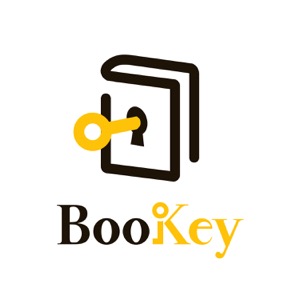The Writing Revolution: Unlocking Students' Writing Potential
Bookey App 30 mins Book Summaries Knowledge Notes and More - A podcast by Bookey APP

Chapter 1 What's The Writing Revolution by Amalia E. Gnanadesikan"The Writing Revolution: A Guide to Advancing Thinking Through Writing in All Subjects and Grades" by Amalia E. Gnanadesikan is a comprehensive resource that emphasizes the pivotal role of writing as a tool for enhancing cognitive processes and deepening understanding across all subjects. This guide provides teachers with effective strategies to integrate writing into their curriculum. It discusses various techniques, such as utilizing sentence-level writing to scaffold student learning, and emphasizes the importance of teaching writing explicitly as a way to develop critical thinking skills. The book outlines a structured approach that empowers students to articulate their thoughts more clearly, thereby improving their overall academic performance. With practical examples and lesson plans, Gnanadesikan illustrates how writing can be a powerful catalyst for intellectual engagement and mastery of complex concepts.Chapter 2 The Writing Revolution by Amalia E. Gnanadesikan Summary"The Writing Revolution" by Amalia E. Gnanadesikan is a comprehensive guide designed to help educators improve students' writing skills through a structured approach known as the Hochman Method. The book emphasizes the crucial connection between thinking and writing, arguing that effective writing instruction can significantly enhance students’ overall academic performance. Key Concepts:Foundation of Writing: Gnanadesikan underscores that writing is a skill that can be taught and improved upon with practice and proper instruction. The book asserts that writing is not simply a form of communication but an essential element of critical thinking and learning.The Hochman Method: This method focuses on teaching students to construct sentences and paragraphs systematically. It introduces various tools and techniques to scaffold writing, starting from simple sentence structures to complex essay formation. Sentence-Level Work: This involves teaching students how to write more effective, varied, and complex sentences, leveraging the power of grammar and syntax. Paragraph Development: Once sentence construction is mastered, the method progresses to developing coherent and cohesive paragraphs, encouraging logical flow and clarity.Teaching Strategies: The book provides practical strategies and lesson plans that educators can implement in the classroom. Techniques include modeling writing tasks, using graphic organizers, and providing targeted feedback. Practice and Revision: Importance is placed on revision as a critical component of the writing process, equipping students with the tools to refine and improve their work.Application Across Subjects: Gnanadesikan highlights how writing skills are not confined to English Language Arts but are essential across various disciplines, including science and social studies. The writing strategies can be adapted to fit the specific requirements of different subject areas.Building a Writing Culture: The book encourages creating a classroom environment that values writing, promotes risk-taking, and fosters peer collaboration, ultimately leading to a culture where students feel comfortable expressing their ideas through writing. Conclusion:"The Writing Revolution" serves as an essential resource for educators seeking to enhance their students' writing capabilities. By adopting the principles and methods outlined in the book, teachers can effectively support learners in becoming more skilled and confident writers, thus improving their overall academic success.Chapter 3 The Writing Revolution AuthorAmalia E. Gnanadesikan is the co-author of the influential educational book, "The Writing Revolution: A Guide to Advancing Thinking Through Writing in All Subjects and Grades," published in 2017. This book focuses on strategies to enhance
